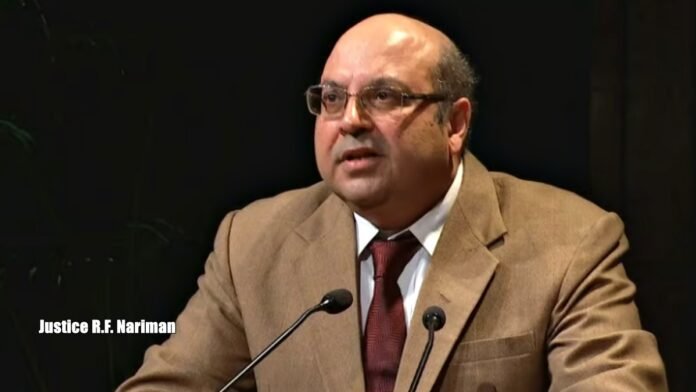
New Delhi: Former Supreme Court judge Justice R.F. Nariman has reignited controversy over the Ayodhya verdict by questioning the Supreme Court’s 2019 decision to award the disputed land for the construction of a Ram temple. Calling the judgment a “mockery of the judicial process” and a deviation from secular principles, Nariman highlighted inconsistencies in the court’s reasoning, particularly its acknowledgment that no Ram temple had existed under the Babri Masjid. His remarks have stirred fresh debates over the judicial and archaeological underpinnings of the historic verdict.
The ASI Excavation: Unveiling Layers of History
Justice Nariman’s critique led to renewed scrutiny of the Archaeological Survey of India (ASI) excavation report, which played a pivotal role in shaping the Supreme Court’s decision. The ASI excavation at the disputed site began in March 2003, following permission from the Allahabad High Court and based on Ground Penetrating Radar (GPR) surveys indicating the presence of man-made structures beneath the surface. Over five months, a 50-member ASI team, supported by security forces and court-appointed representatives, worked to uncover the site’s historical layers.
Findings of the Excavation
The excavation revealed structures spanning multiple historical periods:
- Upper Layers (18th–19th Century): Linked to the Mughal era, these layers included elements consistent with Islamic architectural styles.
- Middle Layers (Sunga, Kushan, Gupta, Maurya Periods): These layers suggested habitation and development from the 2nd century BCE to the 6th century CE.
- Deeper Layers (Circa 1680 BCE): Artifacts such as black glossy pottery and terracotta figurines traced the site’s origins back to the 17th century BCE, much earlier than previously believed.
The excavation also uncovered evidence of a large structure dating to the post-Gupta period, believed to have been a significant religious site. Archaeological elements such as stone pillars, statues, and terracotta fragments suggested a transition from residential use to religious significance during this era.
ASI Report and Judicial Decisions
The ASI findings became a cornerstone in judicial deliberations. The 2019 Supreme Court judgment acknowledged that the Babri Masjid was not constructed on vacant land but atop a pre-existing structure resembling a temple. This conclusion, combined with historical and archaeological evidence, led to the court’s decision favoring the construction of the Ram temple.
However, archaeologist B.R. Mani, who supervised the excavation, emphasized the need for transparency. He has repeatedly urged the government to release the ASI report to the public, allowing citizens to access detailed and accurate historical insights.
Justice Nariman’s Criticism and Its Implications
Justice Nariman’s statement underscores the delicate balance between law, history, and faith in cases like Ayodhya. His remarks have reignited debates over the interpretation of archaeological evidence and its alignment with constitutional principles of secularism. Critics argue that while the ASI report provided important context, the court’s reliance on it may have inadvertently prioritized religious sentiment over secular legal principles.

Call for Transparency and Dialogue
As the controversy intensifies, there are growing calls for the government to publish the full ASI report to foster transparency and enable a comprehensive understanding of the site’s history. Meanwhile, Justice Nariman’s remarks have sparked broader discussions about the role of courts in mediating religious and cultural conflicts, emphasizing the need to uphold the foundational values of secularism.
The Ayodhya verdict, hailed as a milestone by some, remains a deeply polarizing issue. With renewed scrutiny of the judgment and its basis, the question of how history and faith intersect with modern judicial processes continues to loom large in India’s public discourse.







































